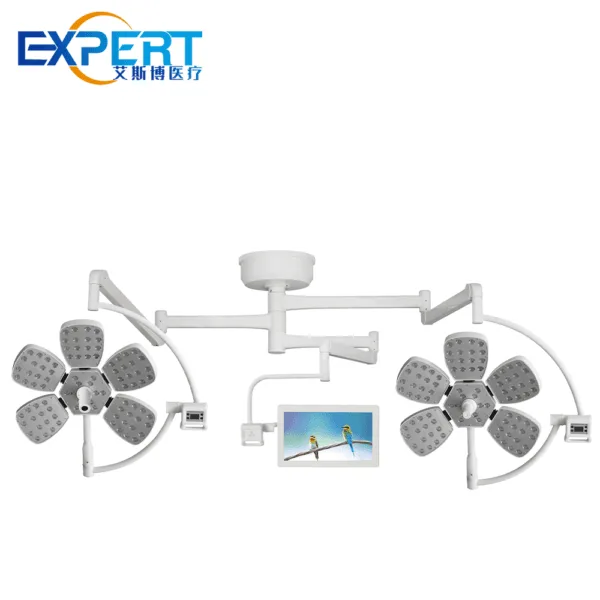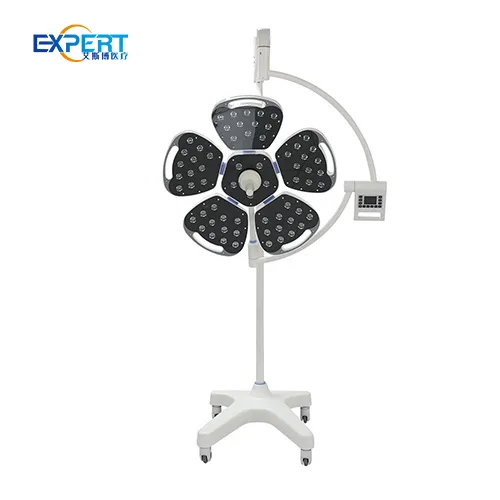Address
304 North Cardinal St.
Dorchester Center, MA 02124
Work Hours
Monday to Friday: 7AM - 7PM
Weekend: 10AM - 5PM
Address
304 North Cardinal St.
Dorchester Center, MA 02124
Work Hours
Monday to Friday: 7AM - 7PM
Weekend: 10AM - 5PM

This guide explores the various types of surgical lights, their features, and key considerations for procurement to help make informed decisions.
Welcome to My Blog!
Before we dive into the content, I’d love for you to join me on my social media platforms where I share more insights, engage with the community, and post updates. Here’s how you can connect with me:
Facebook:https://www.facebook.com/profile.php?id=100071234835011
LinkedIn:https://www.linkedin.com/company/74943205/admin/dashboard/
YouTube:www.youtube.com/@shandongexpertmedicalequip4695
TikTok:www.tiktok.com/@expertmedical
Now, let’s get started on our journey together. I hope you find the content here insightful, engaging, and valuable.

Surgical lights are critical components in modern operating rooms, illuminating the surgical field to ensure precision and safety during procedures. At Expert, a high-tech enterprise dedicated to developing, manufacturing, and selling operating room and ICU equipment, we understand the importance of selecting the right types of surgical lights for healthcare facilities worldwide. These lights must provide optimal brightness, color accuracy, and flexibility to meet the demands of complex surgeries. This guide explores the various types of surgical lights, their features, and key considerations for procurement to help medical professionals make informed decisions.
The quality of illumination in the operating room directly impacts surgical outcomes. Different types of surgical lights are designed to cater to specific procedural needs, from general surgery to specialized interventions like neurosurgery or cardiac operations. Poor lighting can lead to errors, eye strain for surgeons, or compromised visibility. By understanding the available options, hospitals can invest in lighting solutions that enhance efficiency, reduce fatigue, and improve patient safety.
When evaluating types of surgical lights, several features stand out as essential. These include adjustable brightness, high color rendering index (CRI) for accurate tissue visualization, shadow reduction technology, and ergonomic design for easy positioning. Expert’s surgical lights, for instance, are engineered with advanced optics to minimize shadows and provide consistent illumination, ensuring surgeons can focus on the task at hand without distractions.
There are several types of surgical lights available, each suited to specific applications. Below, we break down the most common categories to help procurement teams understand their options.
LED surgical lights have become the gold standard in modern operating rooms due to their energy efficiency, long lifespan, and superior light quality. These lights produce bright, white light with excellent color accuracy, making them ideal for procedures requiring precise tissue differentiation. At Expert, our LED surgical lights are designed to deliver consistent performance with minimal heat output, reducing the risk of tissue drying during long surgeries.
Halogen lights were once the primary choice for surgical illumination. While they offer bright, focused light, they consume more energy and generate more heat than LED alternatives. Some facilities still use halogen lights for their affordability, but their shorter lifespan and higher maintenance costs make them less popular in modern settings.
Xenon surgical lights are known for their intense brightness and daylight-like color temperature. These lights are often used in specialized procedures requiring maximum illumination, such as orthopedic or cardiovascular surgeries. However, their high cost and energy consumption make them less common in general operating rooms.
Hybrid surgical lights combine the benefits of multiple technologies, such as LED and halogen, to offer versatile performance. These systems allow surgeons to switch between light sources or adjust settings for specific procedures, providing flexibility in dynamic surgical environments. Expert’s hybrid models are designed to meet the diverse needs of global healthcare facilities, offering customizable solutions for various surgical specialties.


To assist procurement teams in evaluating options, the following table summarizes key characteristics of the main types of surgical lights. This comparison focuses on technical specifications and practical considerations, avoiding brand-specific details.
| Type of Surgical Light | Light Source | Lifespan (Hours) | Energy Efficiency | Heat Output | Color Rendering Index (CRI) | Best Use Case |
|---|---|---|---|---|---|---|
| LED | LED | 50,000+ | High | Low | 95+ | General and specialized surgeries |
| Halogen | Halogen | 1,000-2,000 | Moderate | High | 85-90 | Budget-conscious facilities |
| Xenon | Xenon | 500-1,000 | Low | High | 90+ | High-intensity procedures |
| Hybrid | LED/Halogen | 30,000-50,000 | High | Moderate | 90+ | Versatile surgical environments |
Choosing the right types of surgical lights involves evaluating several factors to ensure compatibility with your facility’s needs. Below are key considerations for procurement teams.
The illuminance of surgical lights, measured in lux, determines their ability to light up the surgical field. Most modern lights offer adjustable brightness, typically ranging from 40,000 to 160,000 lux. LED types of surgical lights, like those offered by Expert, provide customizable intensity to suit various procedures, ensuring surgeons have the precise illumination required.
Shadows can obscure critical areas during surgery, making shadow reduction technology a vital feature. Advanced types of surgical lights use multi-point light sources or reflectors to minimize shadows, even when surgical staff move around the operating table. Expert’s designs prioritize deep field illumination, ensuring consistent visibility at varying depths.
Surgeons need lights that are easy to maneuver and adjust during procedures. Modern types of surgical lights come with ergonomic handles, touch controls, or voice-activated systems. Expert’s surgical lights are designed with intuitive controls, allowing seamless adjustments without disrupting the surgical workflow.
Long-term costs are a significant consideration for procurement teams. LED types of surgical lights typically have a lifespan of over 50,000 hours, reducing replacement frequency and maintenance costs. In contrast, halogen and xenon lights require more frequent bulb changes, increasing operational expenses over time.
Each type of surgical light is suited to specific surgical disciplines. For example, LED lights are versatile for general surgery, while xenon lights excel in high-precision fields like neurosurgery. Hybrid lights are ideal for facilities performing a wide range of procedures, as they offer adaptability. Expert’s global product line includes tailored solutions for various specialties, ensuring hospitals worldwide can find the right fit for their operating rooms.
General surgery requires reliable, all-purpose lighting. LED types of surgical lights are the preferred choice due to their balance of brightness, energy efficiency, and low heat emission, making them suitable for procedures like appendectomies or hernia repairs.
For complex procedures like cardiac or orthopedic surgeries, xenon or hybrid types of surgical lights may be necessary to provide intense, focused illumination. These lights ensure surgeons can see fine details, such as blood vessels or bone structures, with clarity.
Investing in advanced types of surgical lights offers long-term benefits for healthcare facilities. These include improved surgical precision, reduced surgeon fatigue, and enhanced patient outcomes. By choosing high-quality lights from trusted manufacturers like Expert, hospitals can ensure compliance with international standards and provide their surgical teams with the tools needed for success.
LED types of surgical lights are particularly cost-effective, consuming less power and requiring fewer replacements than traditional options. This aligns with Expert’s commitment to sustainable, high-performance solutions for global markets.
Proper illumination reduces the risk of errors during surgery, directly impacting patient safety. High-CRI lights ensure accurate color representation, allowing surgeons to distinguish between tissues effectively.

Procurement teams face several challenges when selecting surgical lights, including budget constraints, compatibility with existing systems, and varying surgical requirements. Expert addresses these challenges by offering customizable lighting solutions and comprehensive support to ensure seamless integration into any operating room.
While budget-friendly options like halogen lights may seem appealing, their higher maintenance costs can outweigh initial savings. Procurement teams should prioritize long-term value, as seen in LED or hybrid types of surgical lights.
Surgical lights must integrate with existing operating room setups, including ceiling mounts or mobile stands. Expert’s modular designs ensure compatibility with diverse infrastructure, making them a reliable choice for global healthcare facilities.
Selecting the appropriate types of surgical lights is a critical decision that impacts surgical precision, patient safety, and operational efficiency. By understanding the features, benefits, and applications of LED, halogen, xenon, and hybrid lights, procurement teams can make informed choices that align with their facility’s needs. At Expert, we are committed to providing innovative, high-quality surgical lighting solutions to healthcare facilities worldwide. Contact us today to explore our range of surgical lights and elevate your operating room’s performance.
What are the main types of surgical lights available?
The primary types of surgical lights include LED, halogen, xenon, and hybrid systems, each offering unique benefits for different surgical applications.
How do LED surgical lights compare to halogen lights?
LED surgical lights are more energy-efficient, produce less heat, and have a longer lifespan compared to halogen lights, which are less expensive upfront but require more frequent maintenance.
What is the ideal CRI for surgical lights?
A CRI of 90 or higher is ideal for surgical lights, as it ensures accurate color representation, critical for distinguishing tissues during procedures.